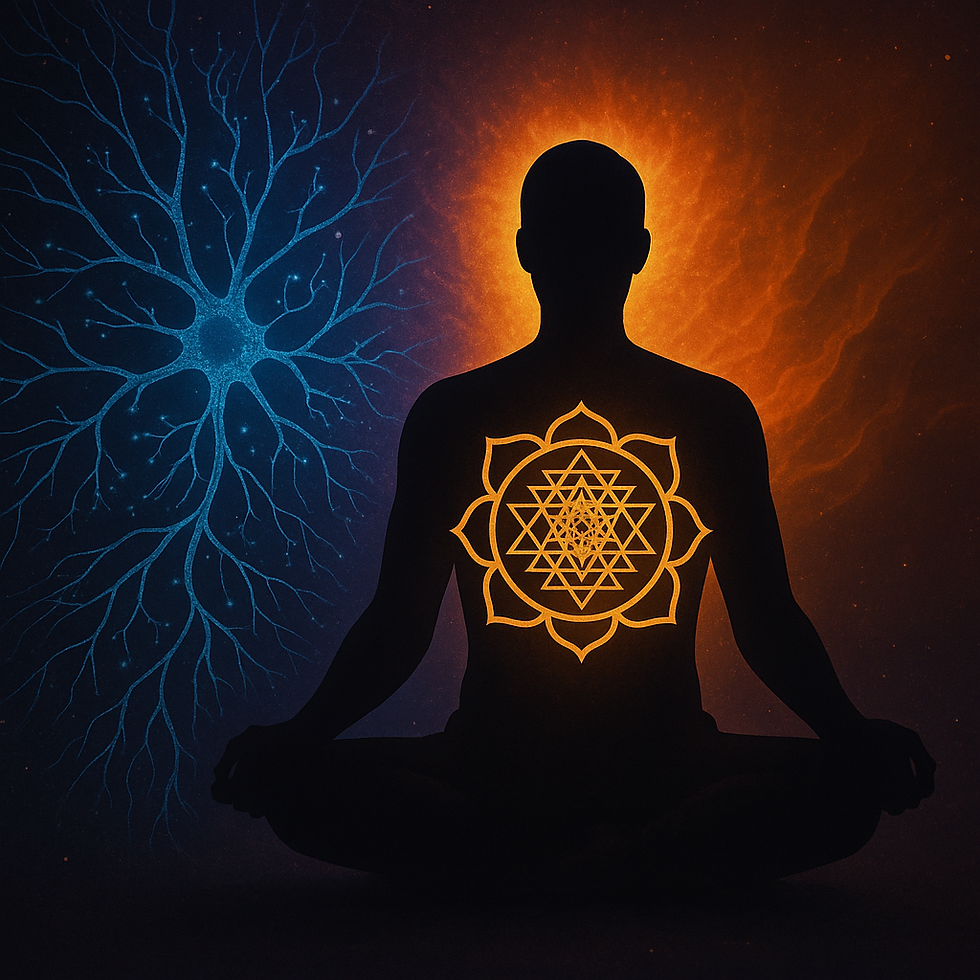Breaking Addiction: The Dis-Entrainment Groove
- Sasha Tanoushka BCH IACT

- Oct 21
- 2 min read
☕ Featuring “Come Down” by Anderson .Paak

Addiction has a rhythm.
It’s rarely random — it’s a loop.
Cue → craving → reaction → relief → regret → repeat.
Our nervous system entrains to this rhythm just like the body locks into a drumbeat. Even when we know it’s destructive, the beat is familiar — and the brain loves familiarity.
🎶 The Groove That Pulls Us
Anderson .Paak’s “Come Down” captures that tug perfectly. The bass line, the repetition, the seductive pull — it’s the soundtrack of temptation itself. You can feel how easily one could fall back into the same movement, the same thought pattern, the same cycle.
In neuroscience, this is called entrainment: when neural oscillations sync with an external or internal rhythm. Addiction is entrainment gone rogue — the mind and body following a rhythm that once soothed but now enslaves.
⚡ Dis-Entrainment: The Reset Button
Dis-entrainment, then, is the process of breaking the loop — interrupting the automatic beat and creating a new one.
It’s the moment you pause before reacting.
It’s when you breathe instead of reaching for the fix.
It’s when your awareness — not your craving — becomes the DJ.
In neurofeedback and somatic work, this moment is measurable. The brain literally desynchronizes from old wave patterns (like compulsive beta spikes or limbic overdrive) and reorganizes into coherence. That’s how healing begins — not through willpower alone, but through rhythm reset.
🧠 Why It Works
When you consciously break a loop:
You weaken the cue-reward link in the basal ganglia.
You activate prefrontal control, improving self-regulation.
You retrain dopamine to respond to novelty and choice, not compulsion.
🎵 Using Music as Medicine
Listen to “Come Down.” Let it move through you — the beat, the rise, the release. Then imagine your old patterns trying to pull you back into that groove. Feel the tension between habit and freedom.
Now, take one conscious breath.
Shift your focus.
That’s dis-entrainment.
🌱 The Practice
Notice the rhythm — Identify your loop. When does it play? What’s the tempo of your craving?
Interrupt the beat — Breathe, stretch, hum, or move differently. Even one small physical change breaks neural predictability.
Re-score your life — Replace the addictive loop with a new rhythm: creativity, movement, silence, laughter.
Repeat — Every time you break the pattern, you’re training your brain to dance to a freer beat.
✨ Final Note
You don’t have to “come down” in shame — you can come down into presence.
Dis-entrainment is how the nervous system learns a new song — one composed not of compulsion, but of clarity.
🎧 Play it loud. Move differently. Wake up and smell the coffee.




Comments